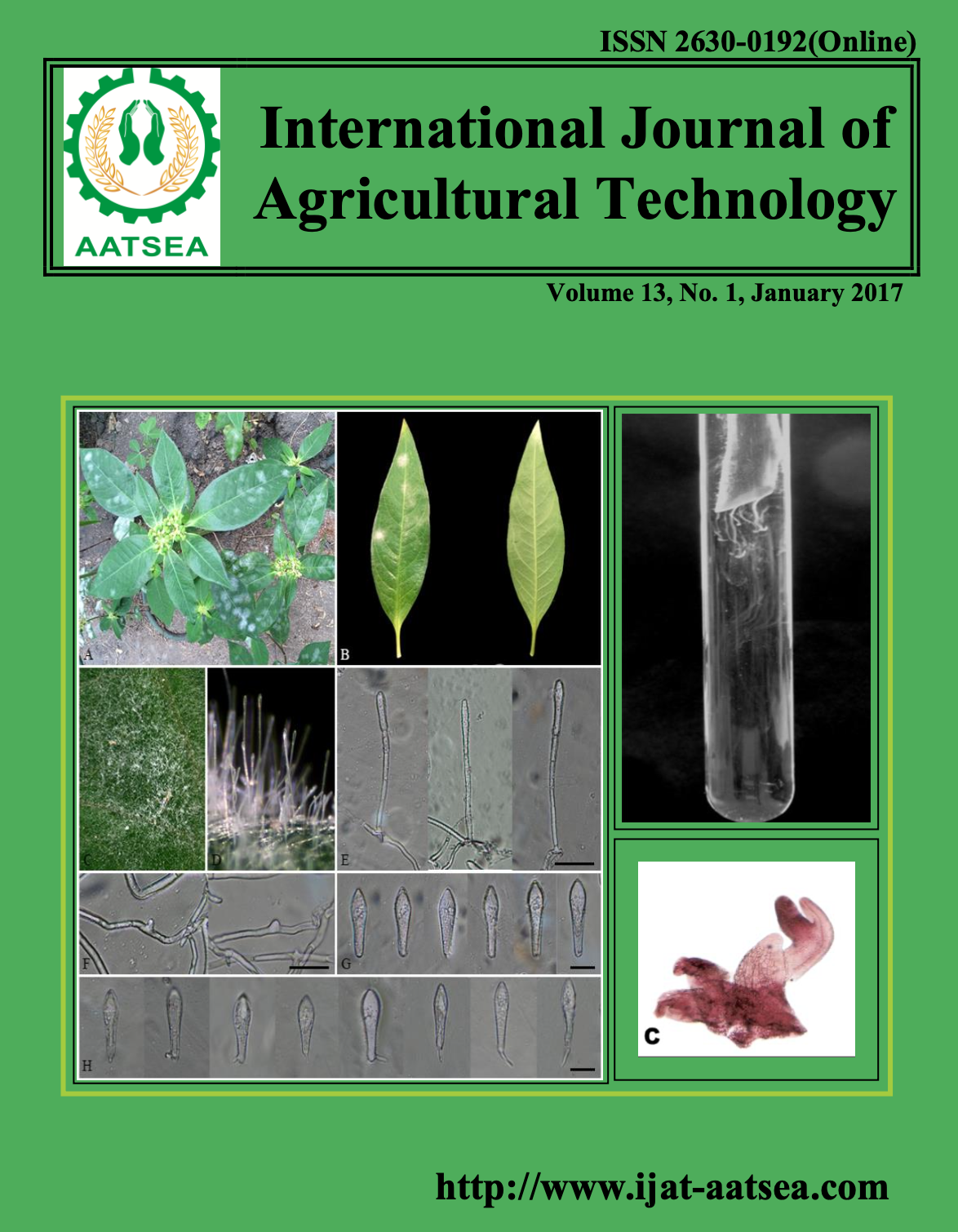Antibacterial of a traditional thai herbal recipe (THR 01) against Staphylococcus epidermidis
Main Article Content
Abstract
The aim of the study was to investigate the antibacterial effects of four ethanolic extracts from traditional Thai herbal recipe (THR 01) and herbal components, Ocimum sanctum Lin., Rhinacanthus nasutus Lin. and Quisqualis indica Lin. against Staphylococcus epidermidis, antibacterial activity was evaluated by the broth macro dilution method according to Clinical and Laboratory Standard Institute (CLSI, 2012) was carried out to obtain the minimum inhibitory concentration (MIC) and minimum bactericidal concentration (MBC). Twofold serial dilution of the extracts was performed to obtain final concentrations ranging from 15.625 to 1,000 µg/ml. The bacterial inoculum (1ml) containing 106 CFU/ml was transferred into each test tube. Positive control with 1% DMSO and negative control without an inoculum added were included. The tested tube was then incubated at 37°C for 18 h. The MIC values were observed at the lowest concentration of crude extracts that produced a complete suppression of bacterial growth. The MBC are performed with 3 concentrations at sub-MIC, MIC and over MIC values. 10 of suspension was sub-culturing on tryptic soy agar (TSA)plate. After incubation at 37°C for 18 h, the plate was recorded MBC value at a concentration no colony of bacteria. The result showed that the antibacterial activity of methanol extracts traditional Thai herbal recipe (THR 01), its herbal components which were Q. indica, R. nasutus and O. sanctum against S. epidermidis isolated is considered to be a major virulence factor affecting their pathogensis in wound infections using broth microdilution. The data on the experimental were indicating the efficacy of a Thai traditional remedy, THR 01 and herbal components which were Q. indica, R. nasutus and O. sanctum that showed results for inhibiting S. epidermidis isolated from wound infections with the MIC were 1000 µg/ml, 500 µg/ml and 500 µg/ml, respectively and all extracts no killed bacteria for the MBC. The study indicated that R. nasutus and Q. indicahad strong antibacterial activities against the tested isolates.
Article Details

This work is licensed under a Creative Commons Attribution-NonCommercial-NoDerivatives 4.0 International License.
References
Chusri, S., Tongrod, S., Saising, J., Mordmuang, A., Limsuwan, S., Sanpinit, S. and Voravuthikunchai, S. P. (2016). Antibacterial and anti-biofilm effects of a polyherbal formula and its constituents against coagulase-negative and-positive staphylococci isolated from bovine mastitis. Journal of Applied Animal Research, 45:364-372.
Clinical and Laboratory Standards Institute (2012). Method for dilution antimicrobial susceptibility test for bacteria that grow aerobically; approved standard-ninth edition. Institute of Dermatology, Ministry of Public Health 32:16-18.
Thailand. Statistics of Disease. (2015). Available from: http://pr.moph.go.th/iprg/include/admin_hotnew/show_hotnew.php?idHot_new=75874.
Jahan, F. N., Rahman, M. S., Rahman, M. M., Gibbons, S., Masud, M. M., Sadhu, S. K. and Rashid, M. A. (2009). Diphenylpropanoids from Quisqualis indica Linn. and their Anti-staphylococcal Activity. Latin American Journal of Pharmacy 28:279-83.
Joshi, B., Lekhak, S. and Sharma, A. (2009). Antibacterial property of different medicinal plants: Ocimum sanctum, Cinnamomum zeylanicum, Xanthoxylum armatum and Origanum majorana. Kathmandu university Journal of Science, Engineering and Technology 5:143-150.
Logeswari, P., Silambarasan, S., and Abraham, J. (2015). Synthesis of silver nanoparticles using plants extract and analysis of their antimicrobial property.Journal of Saudi Chemical Society 19:311-317.
Namvar, A. E., Bastarahang, S., Abbasi, N., Ghehi, G. S., Farhadbakhtiarian, S., Arezi, P., and Chermahin, S. G. (2014). Clinical characteristics of Staphylococcus epidermidis: a systematic review. GMS Hygiene and Infection Control 9:3.
Puttarak, P., Charoonratana, T. and Panichayupakaranant, P. (2010). Antimicrobial activity and stability of rhinacanthins-rich Rhinacanthus nasutus extract. Phytomedicine 17:323-327.
Panichayupakaranant, P., Charoonratana, T., and Sirikatitham, A. (2009). RP-HPLC analysis of rhinacanthins in Rhinacanthus nasutus: validation and application for the preparation of rhinacanthin high-yielding extract. Journal of Chromatographic Science 47:705-708.
Singh, R., Shushni, M. A. and Belkheir, A. (2015). Antibacterial and antioxidant activities of Mentha piperita L. Arabian Journal of Chemistry 8:322-328.
Sutabhaha and Khantawa. (2011). Antibacterial and antifungal activities Fak Khaao leaf extract. Bulletin of Chiang Mai Associated Medical Sciences. 44:31-37.
Sulaiman, F. A., Kazeem, M. O., Waheed, A. M., Temowo, S. O., Azeez, I. O., Zubair, F. I. and Adeyemi, O. S. (2014). Antimicrobial and toxic potential of aqueous extracts of Allium sativum, Hibiscus sabdariffa and Zingiber officinale in Wistar rats. Journal of Taibah University for Science 8:315-322.
Thongrod, S. (2013). Antibacterial mechanisms of a traditional Thai herbal recipe against Staphylococci Isolated from bovine mastitis 81-83.
Udupa, S. L., Shetty, S., Udupa, A. L. and Somayaji, S. N. (2006). Effect of Ocimum sanctum Linn. on normal and dexamethasone suppressed wound healing. Indian Journal of Experimental Biology 44:49.
Sanguri, S., Kapil, S., Gopinathan, P., Pandey, F. K. and Bhatnagar, T. (2012). Comparative screening of antibacterial and antifungal activities of some weeds and medicinal plants leaf extracts: An in-vitro study. Elixir Applied Botany 47:8903-8905.


